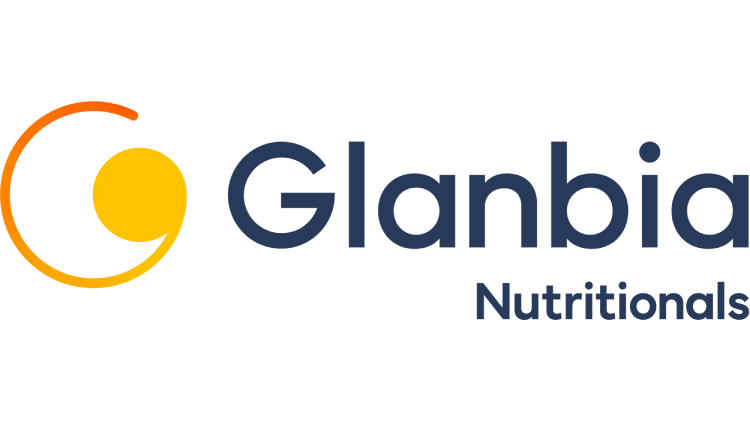Promotional Features
Nutritional support for active women
Active women today are interested in products that can support their lifestyle, giving them the strength and energy to tackle each day head-on. Foods, beverages, and supplements that contain bioactive ingredients can help them do just that.
Today’s active woman consumer is mindful of her health. She understands the connection between being healthy and being able to lead the active lifestyle she wants. She wants to know she can balance work, home, friends, hobbies, and self-care, giving her best to whatever she takes on.
Active women in Asia are more engaged with their personal health. They don’t think of themselves as athletes and prefer physical activities such as walking, running, yoga, and strength training. The health needs of these woman are likely to focus on the things that keep her active: strength, endurance, energy, immunity, and a healthy weight.
Ingredients that Benefit Active Women
Active women consumers know the importance of eating healthy meals but may not always have the time to do it right. They also have an awareness that certain essential nutrients and bioactive ingredients can help them stay healthy and active, making products that contain them especially appealing.
Nutrition products in the market targeting active women include products in the weight loss category as well as the sports nutrition category, where women-focused products are limited. Between January 2018 and April 2022, only 1% of sports nutrition product launches in Asia targeted women.1 Additionally, when looking at nutritional supplement drinks and healthcare launches only 6.6% are targeting women with a high protein claim.2 Protein is associated with supporting strength, as well as weight management.
The popularity of the keto diet for weight loss is also making MCTs (medium chain triglycerides) a go-to ingredient, from 0% of new product launches with Keto indication in 2016 to 10% in 2020.3
MCTs
MCTs or medium-chain triglycerides are a category of fats found in coconut and palm kernel oil that are rapidly absorbed by the small intestine due to their small size. Unlike the long-chain fatty acids more commonly found in the diet, MCTs bypass the standard absorption process and are transported to the liver where they’re converted to ketones. These ketones, in turn, act as a quick source of energy.
The keto diet is a high-fat diet that takes advantage of this process to help transition the body into a state of ketosis. In ketosis, the body’s glycogen stores have been used up, and the body’s fat begins to be burned for energy.4-6 Keto dieters report benefits such as weight loss, reduced food cravings, and even increased energy.
Iron
Iron is found in nutrition products targeting women. Women’s iron needs tend to be higher than men’s – plus there is a high awareness of the link between iron deficiency and anemia, which can lead to low energy levels. Iron is also highly associated with immune system support by 70% of Asian consumers.7 Like iron, vitamin B12 is another nutrient that’s essential for red blood cell production and preventing anemia.
Figure 1: Source: WHO
Iron is an essential mineral used to make hemoglobin (a protein in red blood cells) and myoglobin (a protein in muscle cells), which are responsible for transporting oxygen. Since women lose iron through menstruation, iron deficiency is more common in women than men. Iron deficiency during pregnancy can increase the risk of perinatal mortality, prematurity, and low birth weight.9
While iron is also necessary for growth, development, and making certain hormones, its role in transporting oxygen is especially significant for active women.8 Low iron can lead to low energy levels, including weakness and tiredness. Women engaged in strenuous physical activity can also lose iron through hemolysis (destruction of red blood cells) and sweating.6
Vitamin B12
Vitamin B12 is an essential vitamin also required in the formation of red blood cells. As with iron, a vitamin B12 deficiency can cause symptoms related to low red blood cell count and insufficient oxygen such as fatigue and shortness of breath.10 Since the body cannot synthesize it, vitamin B12 must be obtained through the diet.11
The impact of vitamin B12 on the body’s energy levels in itself makes it a key nutrient for active women. However, the roles of this vitamin are many. Vitamin B12 is involved in the transmission of nerve signals and the synthesis of DNA, for example, making it essential to the function of all the body’s systems.12
Whey Protein
The recommended daily protein intake for women is 46g/day13 and while all women need protein, active women have even greater demands. Whey protein is a fast absorbing, high-quality protein source, containing all nine essential amino acids the body needs.14 Studies show that active women have demonstrated a marked increase in successful muscle protein synthesis when they consume protein-rich foods after exercise.14 Whey protein supports muscle repair, rebuilding, and maintenance and helps prevent muscle soreness after exercising.16-21 Protein is also essential for strong bones.14
Weight management is another important use for protein. Products with whey protein can provide satiety and replace higher calorie and less filling products in the diet. Protein supplementation also helps maintain lean muscle mass.15
Bioactive Ingredients for Active Women
FerriUp™ is a whey protein concentrate that naturally contains abundant levels of lactoferrin, vitamin B12 and provides 80% protein. It provides a strong nutrient foundation that supports iron modulation, energy levels and immune health in active women. The lactoferrin in FerriUp supports the utilization and balance of iron in the body, without stomach upset.22 FerriUp is also an excellent source of vitamin B12 and delivers a high-quality protein with all nine essential amino acids.
Prolibra® is a whey protein-derived ingredient that is high in leucine, bioactive peptides, and milk calcium. It functions to help increase fat loss while maintaining lean muscle for healthy body composition. Common weight loss ingredients do not take into account the ratio of fat to lean muscle lose. Because lean muscle is more metabolically active than fat, the loss of lean muscle works against you by reducing the number of calories you use throughout the day. Prolibra prevents this discouraging scenario by increasing the amount of fat you lose while maintaining lean muscle.23
KetoSure™ MCT is a coconut-based MCT-C8 optimized with whey protein to support keto dieters. Not all MCTs are the same as they provide saturated medium chain fatty acids at different carbons. C8 is more readily absorbed by the liver, more rapidly oxidized, and three to nine times more ketogenic than C10 or C12.24-29
Active women want to feel strong, energized, and healthy so they can stay active into the future. Brands can connect to these consumers by delivering the product benefits that are most important for these active lifestyles.
References
1. Mintel GNPD & Innova Jan 2018-Apr 2022
2. Mintel GNPD 2019-2021
3. Mintel GNPD, Oct & November 2021
4. Pediatr. Neurol. 2019 May;94:32-37.
5. Nutr Res. 2019 Feb;62:64-77.
6. Treasure Island (FL): Ketogenic Diet. StatPearls Publishing; 2020 Jan
7. FMCG Gurus Insights & Opportunities – Immunity Global, January 2020.
8. Peeling P, Dawson B, Goodman C, Landers G, Trinder D. (2008) Athletic induced iron deficiency: new insights into the role of inflammation, cytokines and hormones.,
9. Biomedicines. 2021; 9(8):898., 3. de Benoist B et al., eds. (2008) Worldwide prevalence of anemia 1993-2005
10. Int J Sport Nutr Exerc Metab. 2006 Oct;16(5):453-84
11. NIH 2021 – Vitamin B12 Fact Sheet for Health Professionals
12. Int J Sport Nutr Exerc Metab. 2006 Oct;16(5):453-84
13. Food and Nutrition Board, Institute of Medicine, National Academies: "Dietary Reference Intakes."
14. 2. J Sports Sci Med. 2004 Sep; 3(3): 118–130, 3. Br J Sports Med. 2006 Sep; 40(9): 742–748
15. Br J Sports Med. 2006 Sep; 40(9): 742–748
16. Tang JE, et al. Appl Physiol Nutr Metab. 2007; 32: 1132-38.
17. Hulmi JJ, et al. Nutr Metab. 2010; 7(1): 51.,
18. Romano-Ely BC, et al. Med Sci Sports Exerc. 2006; 38(9): 1608-16.
19. Luden ND, et al. Int J Sport Nutr Exerc Metab. 2007; 17(1): 109-23,
20. Valentine RJ, et al. Int J Sport Nutr Exerc Metab. 2008; 18(4): 363-78.,
21. Davies, RW, et al. 2018. The Effect of Whey Protein Supplementation on the Temporal Recovery of Muscle Function Following Resistance Training: A Systematic Review and Meta-Analysis. Nutrients. Feb 16;10(2); Saunders, MJ, et al. 2018. Protein Supplementation During or Following a Marathon Run Influences Post-Exercise Recovery. Nutrients. Mar; 10(3): 333.
22. Biomedicines. 2021; 9(8):898
23. Frestedt, J.; Zenk, J.; Kuskowski, M.; Ward, L.; Bastian, E.: A whey-protein supplement increases fat loss and spares lean muscle in obese subjects: A randomized human clinical study. Nutrition & Metabolism, 2008 5:8
24. Front Nutr. 2019; 6: 46.
25. Ann N Y Acad Sci. 2016 Mar; 1367(1):12-20.
26. Am J Clin Nutr. 1982 Nov; 36(5):950-62.
27. Int Dairy J. (2006) 16:1374–82.
28. J Lipid Res. 2016 Jun; 57(6):943-54.
29. Current Developments in Nutrition, Volume 1, Issue 4, 4, 2017



